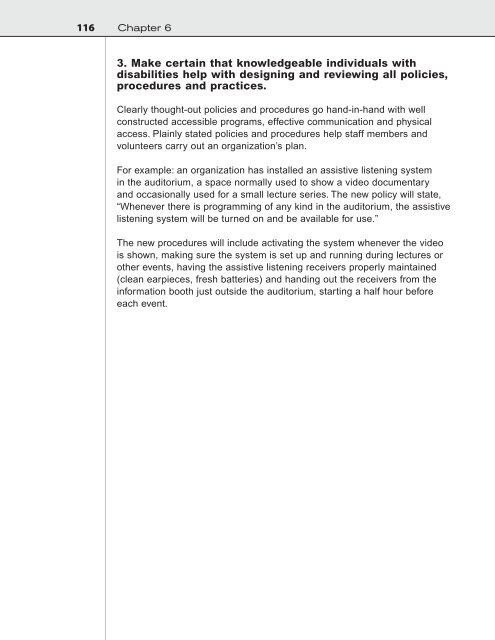Design for Accessibility: A Cultural Administrator's Handbook
Design for Accessibility: A Cultural Administrator's Handbook
Design for Accessibility: A Cultural Administrator's Handbook
You also want an ePaper? Increase the reach of your titles
YUMPU automatically turns print PDFs into web optimized ePapers that Google loves.
116 Chapter 6<br />
3. Make certain that knowledgeable individuals with<br />
disabilities help with designing and reviewing all policies,<br />
procedures and practices.<br />
Clearly thought-out policies and procedures go hand-in-hand with well<br />
constructed accessible programs, effective communication and physical<br />
access. Plainly stated policies and procedures help staff members and<br />
volunteers carry out an organization’s plan.<br />
For example: an organization has installed an assistive listening system<br />
in the auditorium, a space normally used to show a video documentary<br />
and occasionally used <strong>for</strong> a small lecture series. The new policy will state,<br />
“Whenever there is programming of any kind in the auditorium, the assistive<br />
listening system will be turned on and be available <strong>for</strong> use.”<br />
The new procedures will include activating the system whenever the video<br />
is shown, making sure the system is set up and running during lectures or<br />
other events, having the assistive listening receivers properly maintained<br />
(clean earpieces, fresh batteries) and handing out the receivers from the<br />
in<strong>for</strong>mation booth just outside the auditorium, starting a half hour be<strong>for</strong>e<br />
each event.


